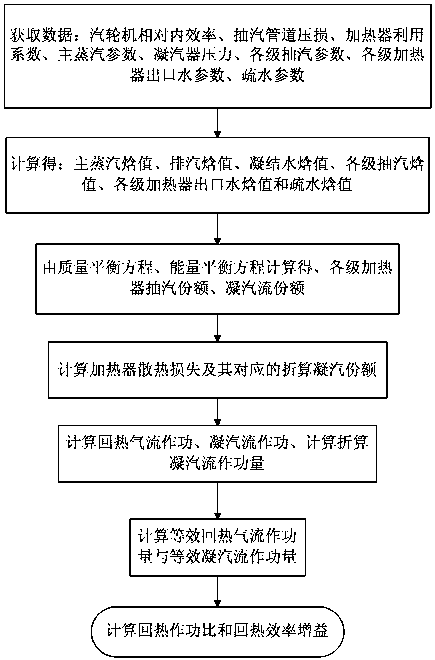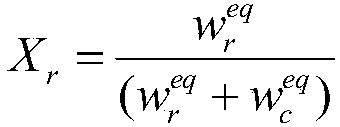Determination method of regenerative work ratio and regenerative gain rate when non-reheat unit has heater heat dissipation loss
A technology of non-reheat unit and regenerative work ratio, which is applied in the field of soft measurement and can solve problems such as failure and heat dissipation loss of heaters
- Summary
- Abstract
- Description
- Claims
- Application Information
AI Technical Summary
Problems solved by technology
Method used
Image
Examples
Embodiment Construction
[0085] A method for measuring the regenerative work ratio and regenerative gain rate when a non-reheat unit has heater heat dissipation loss, and its calculation model is aimed at a non-reheat unit with three-stage regen. The steam turbine consists of a cylinder, and its three-stage extraction steam is numbered as the first, second and third extraction steam in sequence, and is connected to the first, second and third heaters respectively. The heater is a surface heater, and its water discharges to the second-stage heater, the second-stage heater is a hybrid heater, and the third-stage heater is a surface heater, and its water discharges to the hot well of the condenser.
[0086] The measurement steps are as follows,
[0087] Step 1: Calculation of steam-water parameters in thermal system
[0088] Step 1.1: Take the relative internal efficiency η of the steam turbine under THA (Turbine Heat Acceptance, heat consumption guaranteed working condition) ri , The pressure loss rat...
PUM
 Login to View More
Login to View More Abstract
Description
Claims
Application Information
 Login to View More
Login to View More - R&D
- Intellectual Property
- Life Sciences
- Materials
- Tech Scout
- Unparalleled Data Quality
- Higher Quality Content
- 60% Fewer Hallucinations
Browse by: Latest US Patents, China's latest patents, Technical Efficacy Thesaurus, Application Domain, Technology Topic, Popular Technical Reports.
© 2025 PatSnap. All rights reserved.Legal|Privacy policy|Modern Slavery Act Transparency Statement|Sitemap|About US| Contact US: help@patsnap.com



